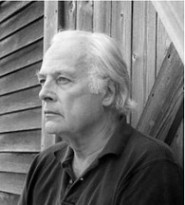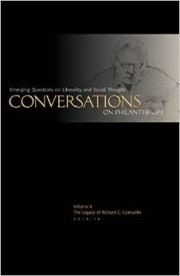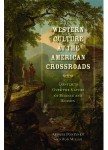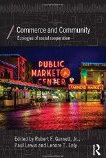Who was Adam Smith?
Adam Smith is one of the most beloved, most hated, most cited, and least read figures in the pantheon of great Western thinkers. His ideas have helped transform political and economic policy throughout much of the world, and they are credited by many for the unprecedented growth in wealth and prosperity the West has seen in the over two centuries since his death. They are also blamed by many for inequalities in wealth that have arisen since Smith’s time. But consider that since 1800 the world’s population has increased six-fold, and yet, despite this enormous increase, real income per person has increased approximately sixteen-fold.1 That is a truly amazing achievement. Yet that increased prosperity would seem due principally to the complex of institutions we now call “capitalism.”
For the only thing that changed between 200 years ago and the previous hundred thousand years of human history was the introduction and embrace of “capitalist” institutions—political, economic, and cultural. And Adam Smith stands as one of the founders of these institutions. Smith is thus a vitally important figure in human history. So who, then, is this Adam Smith? What were his momentous ideas? How could a socially awkward eighteenth-century Scottish philosopher have wrought such tremendous effect on the world? Nicholas Phillipson’s Adam Smith is an excellent place to start in answering these questions. Indeed, Phillipson’s engaging, even compelling, story manages to do what some might have thought impossible: telling an interesting story about an economist.
Yet Adam Smith was much more than what we today think of as an economist. He was a “moral philosopher” who spent his scholarly life trying to understand the principles that animate all human behavior, including both human morality in his 1759 Theory of Moral Sentiments and economic in his 1776 An Inquiry into the Nature and Causes of the Wealth of Nations. Smith came to articulate a conception of human social institutions that was grounded on observation and on a plausible picture of human psychology, and in so doing he also delineated a methodology for research about human society that would set the agenda for new and future disciplines of the “social sciences.”
Phillipson reconstructs Smith’s achievement by locating the key principles of human behavior and social science that Smith discovered in all his extant writings, including of course his two great books, and also by explaining both what Smith takes and how he departs from other important figures like Francis Hutcheson and David Hume. Phillipson’s Smith emerges as an empirically-oriented social scientist, a brilliant mind trying to understand what the institutions are that lead to human happiness and prosperity, who yet also has the generosity of soul to be sincerely committed to using his discoveries to help remove obstacles to the wellbeing of the common man. Smith’s development of a spontaneous-order conception of human social institutions derived from a method of investigation that came to be known as the Scottish Historical School, which involved taking human beings as they are and the world as it is, not as they might be in a fictionalized state, and looking for observable patterns in their behavior. Once these patterns have been observed, the moral philosopher can make rational recommendations about how to enhance the possibilities of prosperous life. That is, or should be, the goal of social science, and we can see from Phillipson that Smith is one of its great founding fathers.
Phillipson’s book is therefore quite welcome. Yet perhaps one might raise a handful of gentle criticisms.
One relates to the thorny issue of the so-called is/ought problem. That problem concerns the logical fallacy of deriving normative (“ought”) statements from descriptive (“is”) statements. It was Smith’s friend David Hume who articulated this common fallacy in his Treatise of Human Nature, remarking that he noticed the frequency with which moralists would go from describing this or that state of affairs in the world to immediately concluding that this or that ought to be done about it. Hume pointed out that such a transition constitutes a logical fallacy because no set of factual statements (even if true) by itself implies any moral injunction. One can describe all the factual details of a murder, for example, without thereby determining any specific moral conclusions to draw from it.
Smith seems to have a foot in both the normative and the descriptive camps in both of his books. For example, in Phillipson’s account, Smith offers in The Theory of Moral Sentiments the “impartial spectator” both as a heuristic device that people in fact employ to help them guide and regulate their behavior, and as a representative of true morality that people ought to follow. This raises a question of how we should understand Smith’s project in The Theory of Moral Sentiments. Is he a moral psychologist describing his empirical findings about the phenomenon of human moral judgment making, or a moralist making recommendations about how people ought to behave? It seems he is arguably both: how, then, do the two go together? Similarly, in The Wealth of Nations, when Smith declares that “it is not from the benevolence of the butcher, the brewer, or the baker that we expect our dinner, but from their regard to their own interest,” that sounds like a descriptive statement (and, some have said, a rather cynical one at that)—to which one might retort, “Perhaps that is how we often do behave, but we should not!” One more example: Smith discovers and describes the mechanisms of a spontaneous-order model for understanding human social institutions, but he also seems to positively recommend the decentralized, spontaneously created orders as against centrally planned and designed orders. A discussion from Phillipson of how Smith got from the descriptive to the normative in cases like these would thus have been instructive.
One might also wish Phillipson had given more than merely cursory attention to the question of how to reconcile Smith’s arguments for free trade—indeed, his, in Smith’s own words, “very violent attack” on “the whole commercial system of Great Britain” (247)—with Smith’s vigorous, exacting, and even punctilious fulfillment of his duties as the Commissioner of Customs for the last decade of his life. How can one square the fact that Smith argued for the abolition of tariffs, quotas, and other impediments to trade on the empirical grounds that doing so would increase human prosperity, with the fact that, when given the opportunity, he applied and exacted them with great enthusiasm?
One also wonders how we should understand Smith’s endorsement of free trade and limited government, and indeed his, in Phillipson’s words, “pervasive” “doubts about the competence of modern governments” (232) in light of the rather long list of duties that Smith in various places suggested were the sovereign’s—including some public education and even entertaining “publick diversions” (234). In The Wealth of Nations Smith articulated three duties of government: protecting citizens from foreign invasion, protecting citizens from invasion from other citizens, and “certain publick works” (WN IV.9.51). These public works were those “which it can never be for the interest of any individual, or small number of individuals, to erect and maintain; because the profit could never repay the expence to any individual or small number of individuals, though it may frequently do much more than repay it to a great society” (ibid.). How long a list is that, exactly? Smith suggests that it might include roads, canals, and the above-mentioned public grammar schools and “publick diversions,” but his criteria for selecting suitable public works might open the door far wider. If Phillipson is correct, however (as he surely is), that Smith has fundamental doubts about the competency of government, why would Smith allow even these few public works? Why would he not indeed have come to the opposite conclusion—that, because they are so important to the public, they must therefore not be left to the tender mercies of incompetent government?
Phillipson rightly argues that Smith was not a utopian theorist, but was instead a realist who looked to history (even if sometimes “conjectural history”), to observation, and to what Smith somewhat fancifully called “experiment” to inform his positions. Phillipson claims that “Smith left utopian theorizing to the final pages” of The Wealth of Nations (235), where Smith described the problems associated with public debt, especially as Britain’s was increasing due to expenses associated with its attempt to maintain its empire in America. But what exactly is “utopian” about Smith’s concerns here? If anything, it would seem that, especially given the problems Western governments (American included) are facing with their huge and growing public debts right now, Smith’s discussion could not be more timely or germane to actual, on-the-ground reality.
Let me close with an important and even enlightening lesson from Phillipson’s treatment.
He writes near the end of his book that The Wealth of Nations “is the greatest and most enduring monument to the intellectual culture of the Scottish Enlightenment” (237). Phillipson shows that the story of the Scottish Enlightenment parallels and reflects the story of Smith himself; indeed, the story of the Scottish Enlightenment is, in a deep sense, the story of Smith. Given how profoundly our own world has, in turn, been shaped by ideas that came out of the Scottish Enlightenment, we can say that Smith’s story is also the story of us. Phillipson’s book provides a coherent picture of the complex life of Smith and his integration into the astonishing period of learning and advancement of human knowledge that marked the Scottish Enlightenment. But it is not only for the advancement of knowledge that we have to thank Smith and the Scottish Enlightenment. The tremendous increases in material well-being that Smithian institutions have enabled—and, one might add, the vast increase in philanthropic capacity and opportunity created by this increasing prosperity—has blessed millions of human beings with relief from the nasty, poor, brutish, and short status quo ante of human history. By reminding us of this important history and of Smith’s central place in it, Phillipson’s book not only provides us an illuminating and surprisingly timely window onto our own place in the world today but also an inspiration to protect and extend the fragile but precious Smithian institutions that have played no small role in the development of modern civilization.
A review of Nicholas Phillipson, Adam Smith: An Enlightened Life (New Haven: Yale University Press, 2010)
1. See Deirdre McCloskey’s Bourgeois Dignity (Chicago, 2010), chap. 6.






